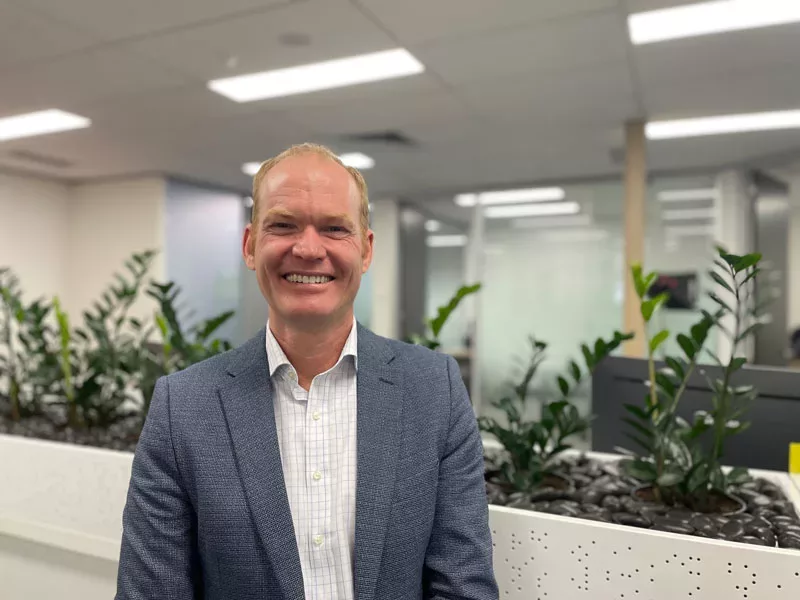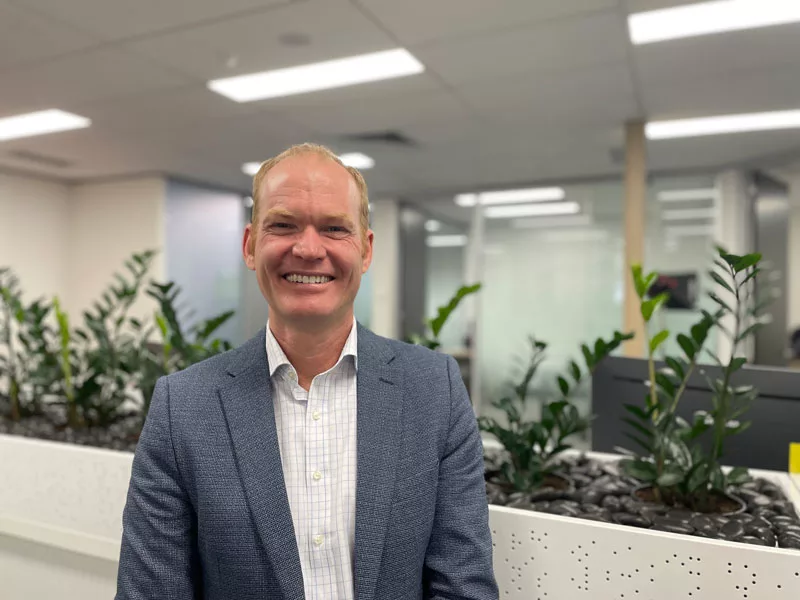
Harvest Technology Group Non-Executive Director Ross McKinnon.
An avid adventure racer, Harvest Technology Group’s newest board member, Ross McKinnon, knows how to focus his efforts for maximum return. From childcare to human performance technology, Ross has channelled his passion for business transformation, leadership and problem-solving, to drive results. A technologist himself, Ross is excited to apply his knowledge and experience at Harvest after contributing to the growth of several other Australian technology companies.
Tell us about your background as it relates to growing tech companies.
I’ve had a very diverse background. I started my career as a mining engineer doing everything from leading shifts in open cut coal operations to working as a drill and blast engineer in the Hunter Valley. At 23, I became an open-cut examiner in NSW. After emigrating to the UK, a shift in career was needed from mining to technology. I was able to utilise my technology degree and ended up helping a UK aerospace company transform their technology platform to comply with international manufacturing standards.
After returning home to Brisbane, I worked at Michael Hill as a digital transformation executive and in 2001 stepped up to act as global CIO. During my time there, the tech team built technology to generate revenue beyond jewellery sales. The team created a cohesive technology ecosystem to centralise and scale the business across Australia, New Zealand and into the US and Canadian markets.
At the start of 2015, I began my current trajectory, joining the board of several companies from technology to childcare. Most notably, I sat on the boards of Fusion Sport and Grabba, where I was able to use my leadership and strategy to help grow two Aussie tech companies.
My core function has remained the same no matter the industry – identifying a problem and developing or using technology to solve that problem in the most profitable way for the business.
What attracted you to joining the HTG Board?
Initially, the technology. As a technologist myself I thought the tech stack was really cool and saw a lot of potential. High-fidelity, secure communication is a problem in many markets as satellite technology just isn’t reliable. I’ve also previously worked with Harvest’s Chairman, Jeff Sengelman, on the board of Fusion Sport, another Australian technology company.
The future for Harvest is exciting. I’m glad I joined the board; the team I’ve met are extraordinary and I’ve been so impressed by what I have seen. Like every business, Harvest has its challenges, but that’s where I operate – that’s my strength and what keeps me interested.
What’s the most important thing the Board does to help customers, partners, and investors?
My objectives for Harvest are to minimise distractions, focus on the problem the technology solves, what people will pay for the solution and optimise the revenue structure. The focus is to create a strong resilient scaling business. Technology businesses can be challenging with markets valuing hardware and software differently. Moving the market expectations to create the optimal revenue structure that’s advantageous to investors, stakeholders, and the business, is a gradual process that pays off in the long term. The Board’s role is also to help to mentor and support the CEO and provide strategic advice and guidance to the business.
What drives you to work with Harvest to help solve remote?
Remote video and data streaming over constrained networks is something I’ve seen as a gap in the market for many years, so I was interested to know how Harvest was solving it. The globe has a problem: overcrowded satellite infrastructure and increasing data requirements – particularly in remote or long-range applications where terrestrial solutions cannot be utilised. Harvest is uniquely positioned to solve this fundamental problem.
At my core, I love creating and I love helping people. I am happiest when I can do both, and that’s what I can do for Harvest.
You are based in Brisbane, Queensland which has some remote places. Have you ever found yourself relying on communications in those areas?
I worked as a nipper in underground mines while I was studying mining engineering in the late 80’s. As a nipper, my role was to drive around underground all shift checking the isolated workers to ensure everyone was okay and that they have the supplies they needed. I worked underground at both Mount Isa and Selwyn gold mines in Queensland. At Mount Isa, my base of operation was 1.9 kilometres underground. It was a very bizarre feeling when you turned off your headlight and not seeing your hand in front of your face. There was no communication network underground at that time and no possibility to transmit video back then.
Do you have a particular career highlight or something you’ve been most proud of?
The mentoring work I’ve done has been some of the most rewarding. On one board, I came in at a challenging moment when the business was struggling but the leadership team had the talent and drive to learn. Over the next 4-5 years I spent time mentoring the CEO and developing those skills. Seeing them grow to become globally recognised as a leader in their field is a career highlight for me.
Do you have downtime? How do you spend it?
I really enjoy adventure racing as an amateur. It is a team sport that involves a continuous race navigation to reach as many checkpoints as you can within a time limit. Races can go from 3 hours up to 10 days, often in remote untouched locations and involve a combination of running, mountain biking and kayaking. In 2011 our team of 4 competed in the world championships in Western Tasmania and came 54th out of 90 teams finishing in 9 days of continuous racing.
Adventure racing is the perfect combination of mathematical problem-solving and physical endurance; you need to work out how to reach the most checkpoints in the maximum amount of time to get the most points. You must solve for your current physical condition of not only yourself, but of all of your teammates as well.
Is there a parallel between your approach to adventure racing and your approach to business?
Yes, 100%. At first, I was training 30 hours a week and realised it was unsustainable. Now my strategy is to focus on intense strength training for an hour three times a week. It means in a race you’ve got all the strength you need to move at speed, but you can reduce your effort and keep going for days. The same is true in business – you don’t want to waste time, energy and effort to end up burning out. Identify the total addressable market, streamline your product and costs, maximise value, minimise wasted expenditure and distractions. Understanding the end customer’s problem, who’s going to pay for it and how much they’re willing to pay – that’s where you need to focus your efforts for maximum return.
Follow Harvest Technology Group on LinkedIn for our latest news and updates.
